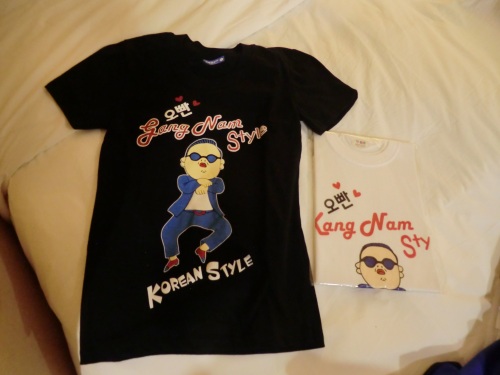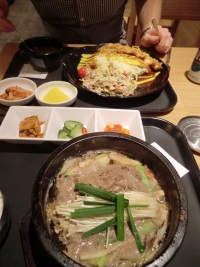
Physics could get a boost in Korea if PSY brought out a physics-related number.
By Matin Durrani and Michael Banks
Sitting in the lounge at Incheon Airport in Seoul waiting for the flight back to London, we’ve decided to draw up a list of 10 random things that the two of us have picked up while on the Physics World editorial visit to Korea. The list is based on observations we’ve made or little nuggets that physicists in the country have told us during our week-long trip. The list is just a bit of fun, so here goes.
1. “South Korea” isn’t a term that people in, er, South Korea like to use, pointing as it does to the divisions in the country. One should rather say Republic of Korea, or just Korea.
2. Golf is a hugely popular hobby in the country but, with land at a premium, driving ranges and “virtual” golf centres are widely found. In fact, we discovered that atomic-force microscope manufacturer Park Systems (like many firms) has an entire room dedicated to virtual golf and employees at the business hold regular tournaments, firing balls into a padded net with a monitor tracking the ball’s trajectory, launch angle and spin.
3. Speaking of golf, Seoul National University on the edge of the capital is built on the site of a former golf course using land that was previously owned by the chairman of Samsung.
4. As for Samsung itself, it is a massive corporation that has its tentacles in every corner of the country from smartphones and ships to “digital bidet toilet seats”. In fact, its revenue accounts for a whopping 17% of the country’s gross domestic product.
5. Korea is the first country in the world to make its development of fusion energy a legally binding commitment.
6. Graphene is all the rage in Korea but several physicists we’ve spoken to feel dismayed that physicist Philip Kim at Columbia University, who is Korean by birth, didn’t win a share of the 2010 Nobel Prize for Physics for his contributions to the field. They reckon a Nobel prize for a Korean physicist would give the country’s physics a massive boost and really raise its profile in the country. In fact, the country hopes that its plans for 50 new Institutes for Basic Science by 2017 will produce the country’s first ever Nobel-prize-winning scientist. (We think PSY bringing out a physics-related song might have even more impact…)
7. Modern Koreans have a passion for coffee with the main streets of Seoul and Daejeon littered with home-grown coffee shops as well as outlets of US chains such as Starbucks and Dunkin’ Donuts. One stat we’ve seen suggests that the number of “gourmet coffee shops” increased 10-fold between 2006 and 2011. Top travel tip: the coffee in the breakfast bar at the Ramada Hotel in Seoul is dreadful.

Korean delicacies at the Food O’Clock restaurant in Seoul.
8. The Korea Institute of Science and Technology was built with the help of US money as a thank you for Korea’s participation in the Vietnam War. In fact, the main auditorium is named after Lyndon Johnson.
9. Nansang Tower in Seoul has great views over the nation’s capital. But don’t be fooled into thinking you can walk up the hill on which the tower stands – you need to get there using a cable car.
10. And finally, Koreans continue to have a passion for their national delicacy of spicy pickled cabbage known as Gimchi, which is served as an accompaniment to many meals, including breakfast. Oh and the other way of knowing you’re eating Korean – rather than Chinese – food is that they use metal (not wooden) chopsticks that will be laid out pointing straight ahead rather than across a dish.
So that’s all from Michael and myself about Korea. Stay tuned for the Physics World special report on physics in Korea, which is due out in September. In the meantime, you can also check out our previous special reports on China, Japan and India.
Guidelines
Show/hide formatting guidelines
this text was deletedwhere people live in harmony with nature and animals</q>
Some text